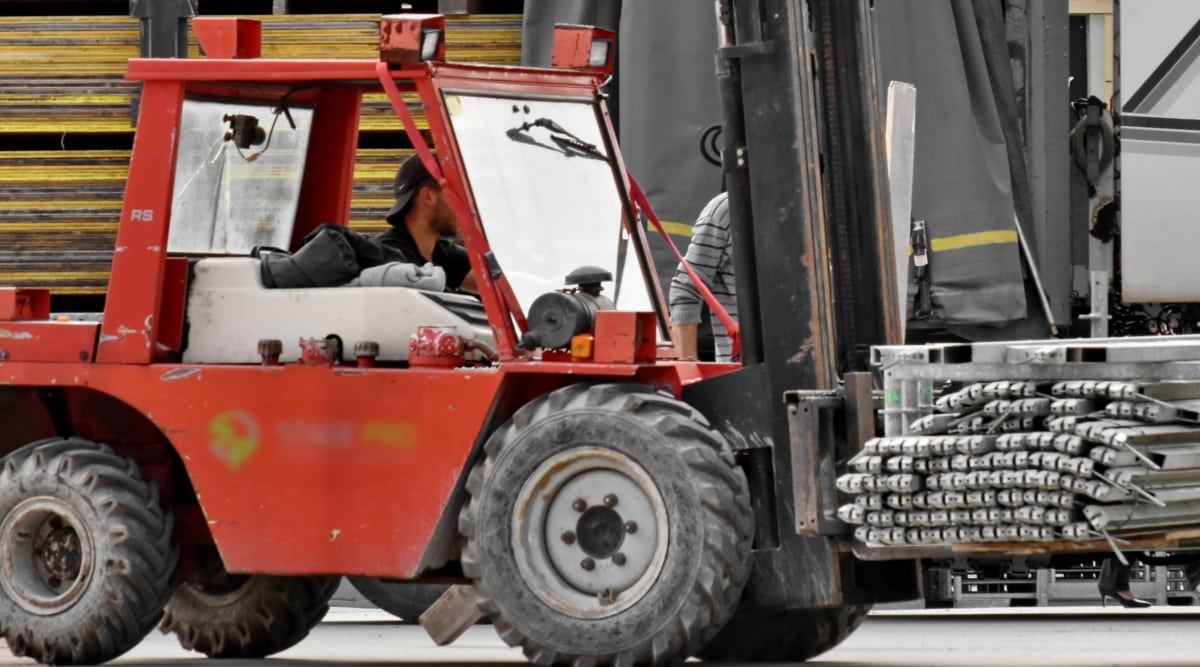
Contents
-
Maintaining a forklift
-
Mandatory maintenance checks
Checks and maintenance are mandatory for the staff’s safety and the forklift truck’s reliability
. Therefore, forklift maintenance must be constant to ensure smooth ongoing earthworks while avoiding accidents.
Maintaining a forklift
To ensure safety and avoid disruption of the flow, the forklift truck must be maintained regularly and undergo a minimum of mandatory checks.
In their training, the personnel who are to drive the forklift truck have been taught the imperative rules for controlling the maintenance of the forklift truck.
Mandatory maintenance checks
The maintenance rules include:
-
daily checks to be carried out on hiring;
-
systematic controls before any use;
-
periodic maintenance follow-ups, depending on the number of hours of the machine.
The checks must be carried out by the forklift operator who is in charge of the forklift truck, under the responsibility of the forklift driver.
Daily checks
Each time the driver is hired, before starting the forklift, he/she should check:
-
the general condition and cleanliness of the forklift’s components;
-
the absence of objects deposited on the bodywork or floor;
-
the height clearance for manoeuvring the forklift;
-
freedom to operate around the forklift;
-
the presence of the mandatory fire extinguisher;
-
the absence of puddles around the trolley indicating a leak;
-
the levels (fuel, lubricant, cooling) of the thermal trolleys;
-
the charge of the batteries and the state of the connections (plugs in place, batteries fixed and protective cover in place) of the electric trolleys;
-
the condition of the lift mast (bolts, hydraulic hoses, chains);
-
the state of the forks and apron;
-
the shape of the tyres and tyres and any pressure;
-
the operation of horns (horn and reversing), lights (changing, indicators, flashing beacon) and dashboard lights.
Checks before use
Before each use of the forklift and while driving it, the operator must constantly check:
-
the condition of the seat belt;
-
the correct automatic operation of the brakes (safety brake, parking brake, brake pedal);
-
the progressiveness of the clutch (converter and hydrostatic);
-
the absence of play in the steering;
-
the operation of all mast components (full lift and lowering, forward and reverse tilt);
-
the lack of abnormal noise and leaks during operation;
-
the functioning of all indicators on the dashboard.
Periodic maintenance
According to the maintenance booklet and the safety rules, you should carry out a complete inspection and maintenance of the forklift truck at certain defined intervals.
This maintenance does not replace the daily and pre-use checks.
As a general rule, the following table can be applied:
|
Component |
Check |
Change |
Grease |
|
Hydraulic system |
50 h |
|
|
|
Engine oil |
50 h |
200 h |
|
|
Hydraulic oil |
50 h |
1 000 h |
|
|
Fuel tank |
200 h |
|
|
|
Cooling |
50 h |
|
|
|
Fan belt |
50 h |
|
|
|
Radiator & Fittings |
50 h |
|
|
|
Battery electrolyte |
50 h |
|
|
|
Tyres and tires |
50 h |
|
|
|
Mast (hydraulic and chains) |
50 h |
|
|
|
Forks |
50 h |
|
|
|
Brakes |
50 h |
|
|
|
Transmission |
50 h |
|
|
|
Decanter filter |
50 h |
|
|
|
Brake fluid |
|
200 h |
|
|
Air filter |
50 h |
2000 h |
|
|
Wheel nuts |
|
200 h |
|
|
Mast studs |
|
|
200 h |
|
Lifting system axes |
|
|
200 h |
|
Bridge oil |
200 h |
1000 h |
|
|
Hydraulic pump filter |
|
2000 h |
|
|
Converter filter |
|
2000 h |
|
|
Wheel bearings |
|
|
1000 h |
Table of responsibilities in the event of a handling accident
|
Responsible for |
Responsibility |
Causes of accidents |
|
COMPANY |
Failure to organise work in the company |
|
|
COMPANY |
Lack of layout of the trolley manoeuvring area |
|
|
COMPANY and CARRIER |
Mechanical defects and lack of maintenance of the trolley. Absence of mandatory controls |
|
|
CARRIER |
Risky behaviour and dangerous activities of truck drivers. |
|
|
CARRIER |
Incorrect loading of the trolley. |
|
